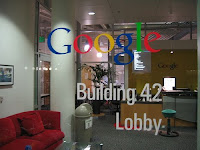
To do this, you must understand your customer's business environment better than ever before. The low hanging fruit of operational cost saving and efficiency has already been picked. You need to engage your customers on a level that is much deeper than that required to simply sell a product. You have to climb inside the heads of the customer’s key executives/managers/users in multiple departments and even up and down their supply chain. It’s hard work!
The consultative salesperson resists the temptation to "pitch" a product or solution until he has laid a solid foundation for selling. This means you have had sufficient dialogue with the customer, and even the customer's customer, to understand their operating environment, critical business drivers, and existing high priority business initiatives. You have to really validate that your solution is sustainable in the customer’s unique business environment.
Consultative selling is way beyond the “thing” you are offering. Consultative selling creates preference for you and your insight… and that creates preference for your product/service and your company.
Consultative selling, from a sales leader's perspective, is the outright transformation of your customer facing teams (sales teams) into service oriented teams that provide operational and business insight to the customers. That becomes your unique identifying characteristic when products alone get harder to differentiate due to price cutting and misinformation.
Ask yourself, are we creating value on every sales call? Ask this question...did we bring so much value/insight to that company’s CEO in today's 1 hour engagement that she would be willing to write us a check for the time we spent together? A consultative sales call provides value to the customer far beyond the features, advantages and benefits of a product:
· Provide access to deep subject matter expertise that doesn’t exist within the customer’s organization.
· Surface tough issues or business realities that would be difficult or dangerous for the customer’s CEO to surface on her own.
· Provide access to an independent outside perspective and the chance to look at a business problem in a different way.
· Shine a light on unrecognized problems.
· Provide knowledge of unanticipated solutions.
· Clear away the fog of competition and markets to revel previously unseen business opportunity.
And if you and your company can't solve the customer’s problem, then you can still add value by becoming a knowledge broker and finding someone that can provide the solution. Don’t worry; they will love you for that too.
Good selling!

























